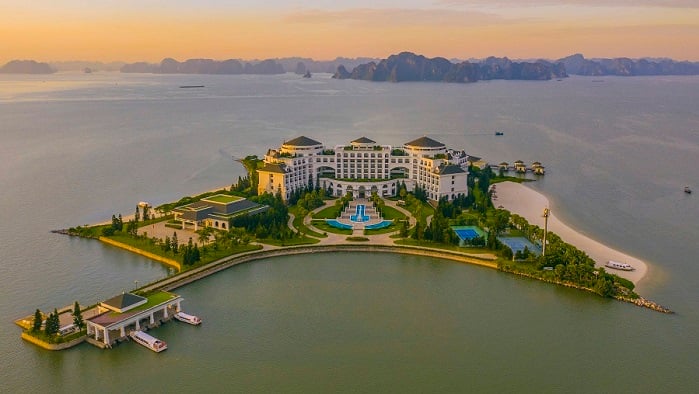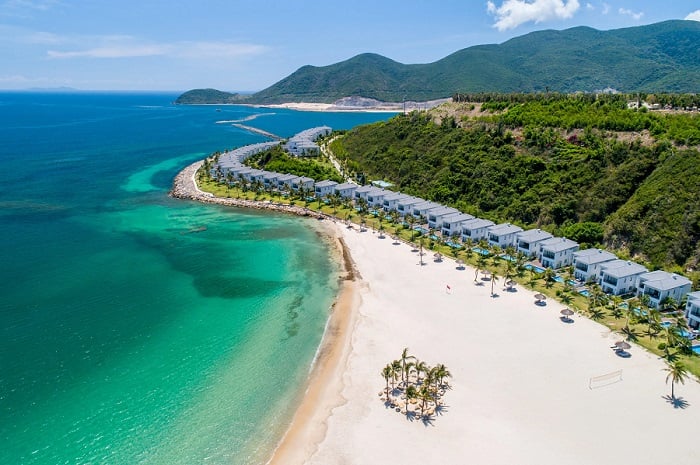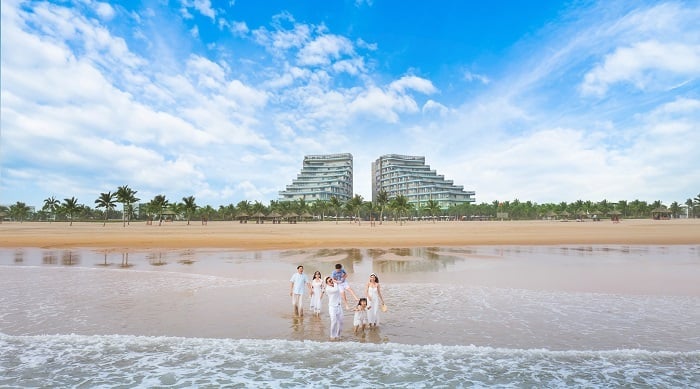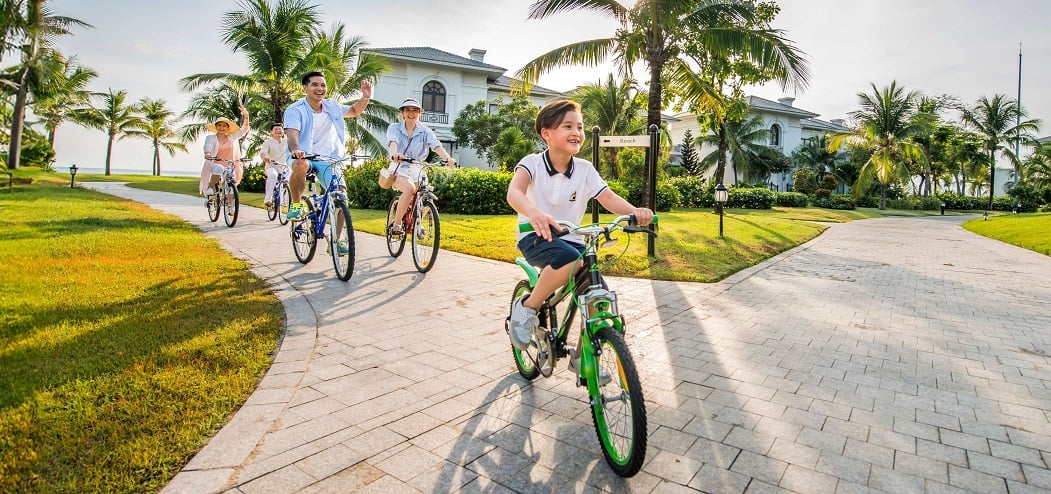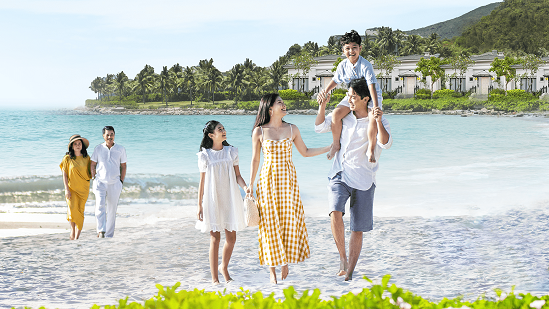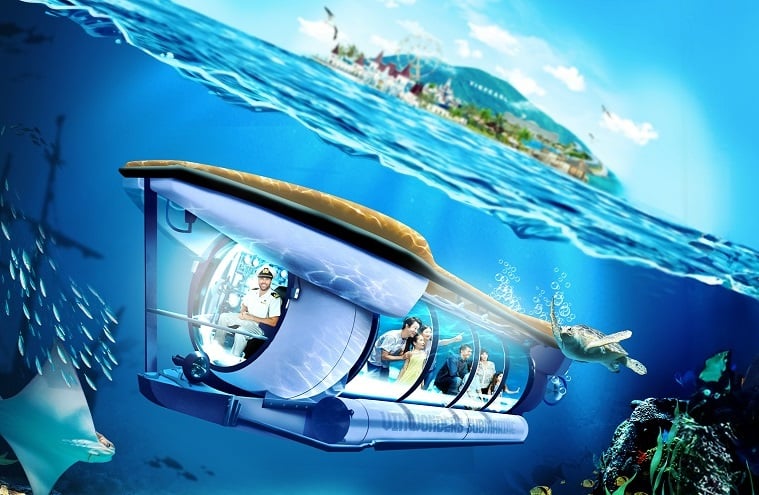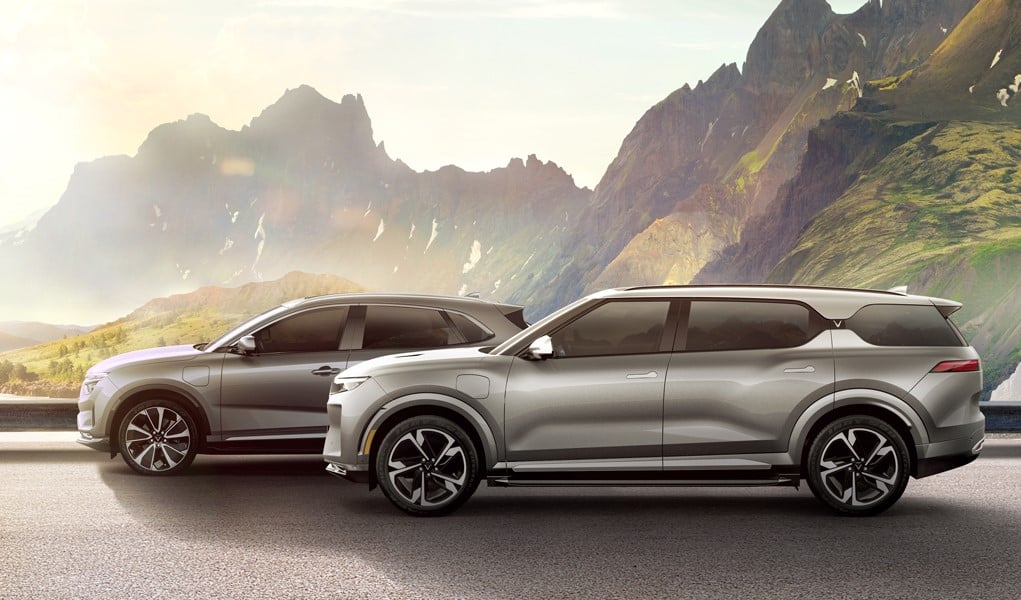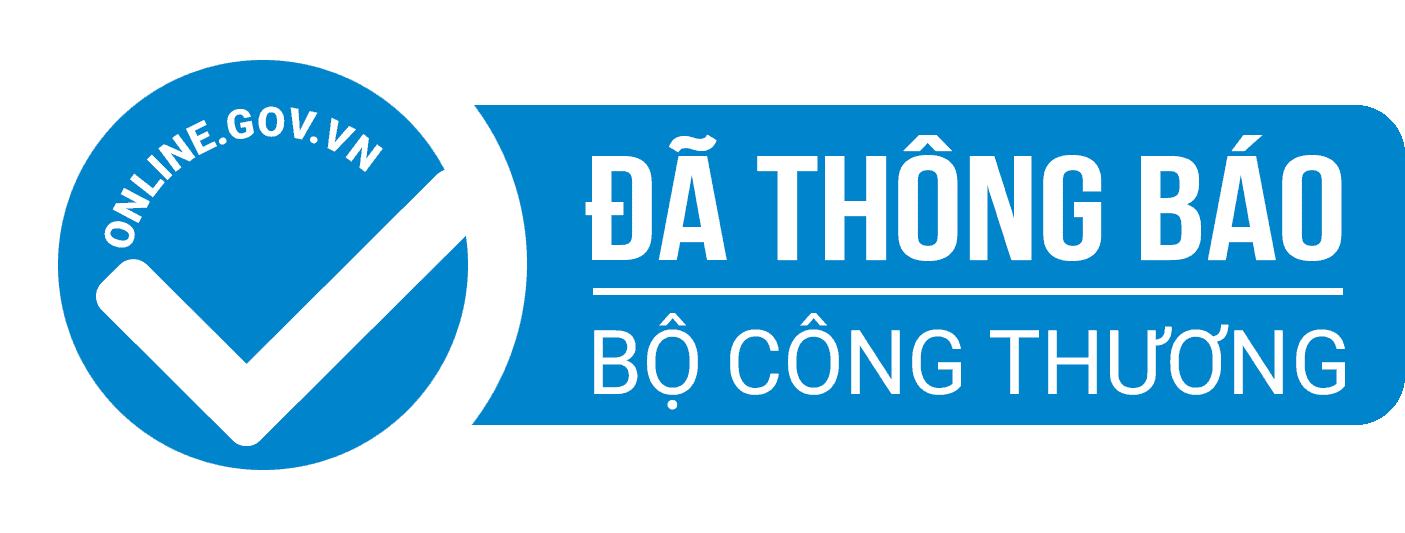
The Mekong River, also known as the “Mother of Water”, is one of the longest and largest rivers in the world, winding through China, Myanmar, Laos, Thailand, Cambodia, and Vietnam. It is home to thousands of plant and animal species and supports the livelihoods of more than 60 million people.
1. Interesting facts about the Mekong River
1.1. The Mekong River is the longest river in Southeast Asia
Upholding this prestigious title, the Mekong flows from high up in the Tibetan Plateau all the way to the South China Sea. It crosses several different countries, ending roughly 4,900 kilometers away from its source and draining an area of nearly 800,000 kilometers.
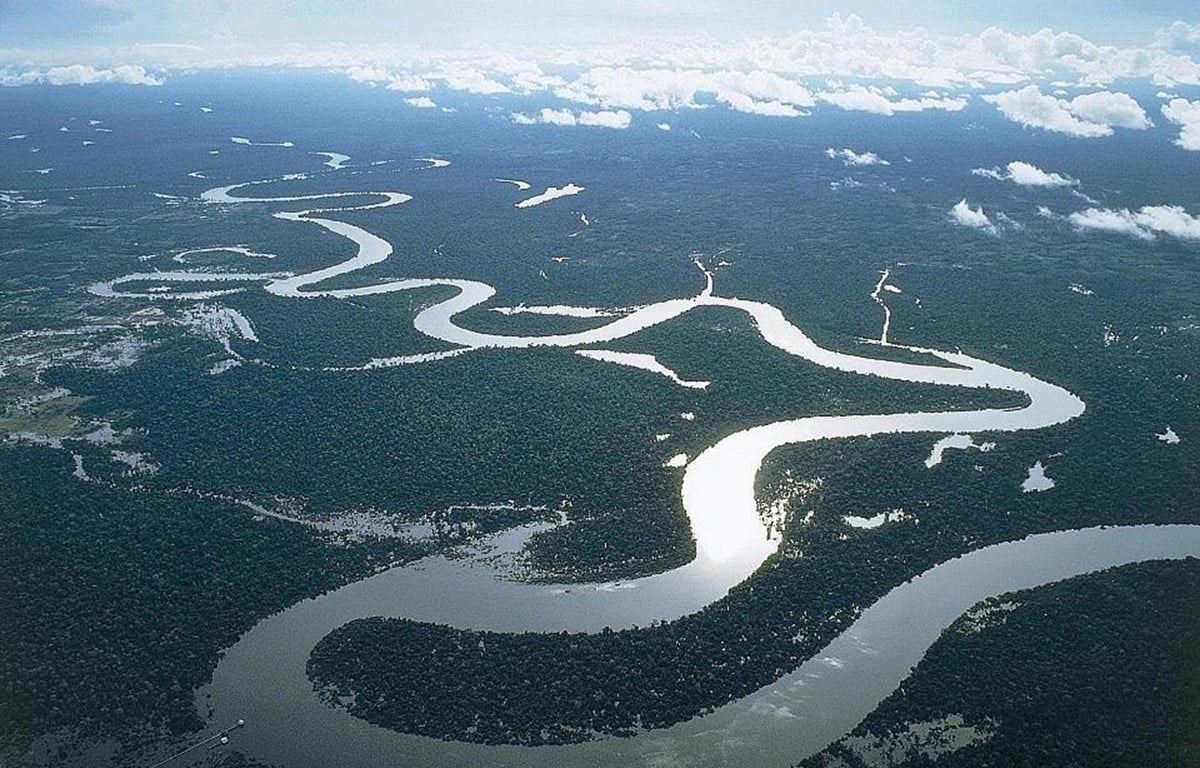
>>> More on: Southeast Asia travel: An ultimate guide for your first ever trip in 2023
1.2. The Mekong River is the world's 12th longest river
On the planet, the Mekong is the 12th longest river and 10th largest river, volume-wise. Feeding it is melting snow from the Himalayas. The river gathers more water as it traverses the gorges of mountains in China’s Yunnan province and other tributaries in its path. It also fills up when passing the Golden Triangle in Thailand and the Khone Falls in Laos. Finally, the Mekong empties into the Mekong Delta.
1.3. The Mekong River flows through 6 countries
The Mekong starts in China’s Tibetan Plateau and flows through a couple of countries: Myanmar, Laos, Thailand, Cambodia, and Vietnam. The river’s basin discharges an average of 457 cubic kilometers every year. The total land area that it drains is approximately 795,000 square kilometers.
The Mekong River Basin consists of seven broad regions, each with distinct topography and geomorphology. However, most people divide it into two parts: the Upper and Lower Mekong River Basin.
- The Upper Mekong River Basin: This part includes the Tibetan Plateau, the Three Parallel Rivers, and the Lancang Basin in China and Myanmar.
- The Lower Mekong River Basin: This comprises the Northern Highlands, the Khorat Plateau, the Tonle Sap Basin, and the Mekong Delta.
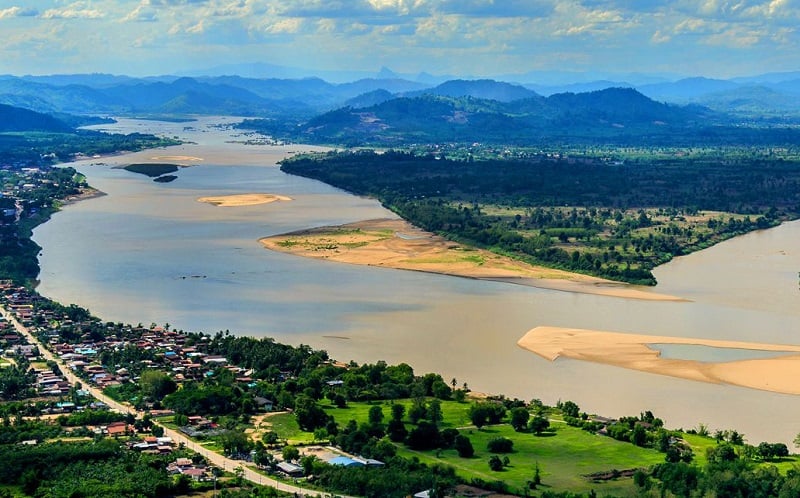
1.4. The Mekong River has many different names
The Mekong goes by a couple of different names:
- “Lancang River”: In its upper reaches, the Mekong is called the Lancang River. The word "Lancang" translates into "turbulent river" in Chinese.
- “Chiang Jiang”: In the Tibetan language, the Mekong is known as "Chiang Jiang", which means "Long River".
- “Mae Nam Khong”: In Thai, the Mekong is called "Mae Nam Khong", which means "Mother of Water".
- “Tonle Thom”: Cambodians called the Mekong "Tonle Thom", which translates into "Great River".
- “Cuu Long”: In Vietnamese, the Mekong is named "Cuu Long". This means “Nine Dragons", representing the 9 branches of the river in the delta.
1.5. The Mekong River is one of the most biodiverse waterways on Earth
Besides the titles of the longest and largest river in terms of volume, the Mekong River is the second most biodiverse river on Earth. The Mekong has a total of 16 “Global 200” WED ecoregions. Needless to say, there is an impressive number of flora and fauna here. Visitors to the river can spot extraordinary species, including:
- Mekong Giant Catfish: This is the largest freshwater fish in the world. It can weigh more than 600 pounds and grow up to 3 meters in length.
- Irrawaddy Dolphin: This is an euryhaline species that is often found in the Mekong's stretch between Cambodia and Laos. It has a unique bulging forehead and short beak.
- Siamese Crocodile: This is a medium-sized crocodile that lives in freshwater habitats. It features a distinctive bony crest at the rear of its head.
- Sarus Crane: This is the tallest flying bird in the world, reaching 156 centimeters in height. The Sarus Crane is easily recognizable with a bare red head and pale red legs.
- Giant Ibis: This is Cambodia's national bird known for its impressive size. It is also the only member of the monotypic genus Thaumatibis.
- Clouded Leopard: This is a wild cat species that is named after their distinctive cloud-like markings. They are typically found in the region's dense forests.
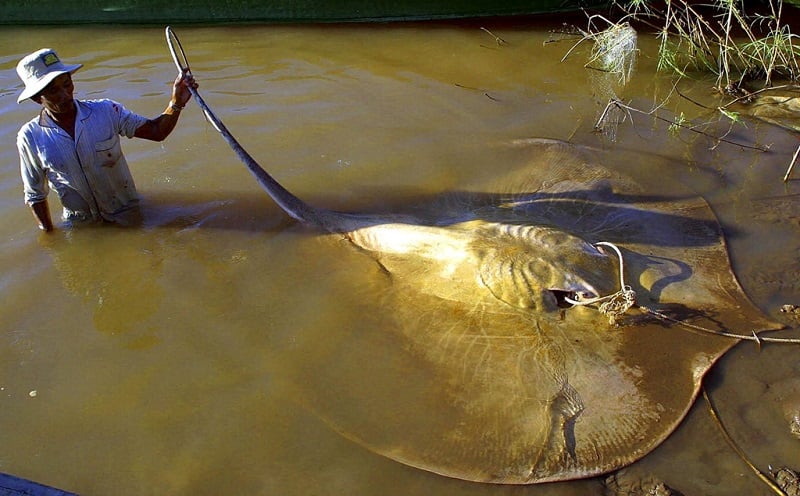
1.6. The Mekong River is vital to the development of the region
Beyond being a biologically rich ecosystem, the Mekong is also a source of income and sustenance for more than 60 million people. Those living along the river rely on its water for cooking, irrigating, and sanitizing. Additionally, it serves as a transportation and trading route for many.
The locals’ primary protein intake also comes from the river’s fish. In fact, up to 80% of Cambodians and Vietnamese eat fish from the river! Fortunately, as one of the world’s largest inland fisheries, the Mekong yields at least 2 million metric tonnes of fish annually.
Moreover, the Mekong River is Vietnam’s rice bowl. More than half of the country’s rice production happens in the delta. The fertile area, blessed by the river's annual sediment, also sustains a diverse array of crops, which also explains why is the Mekong River important.
Apart from supporting people’s livelihoods, the Mekong River plays a role in shaping the history, culture, and religion of the region. As a transportation and trading route, it connects goods and ideas from different countries to nurture vibrant exchanges.
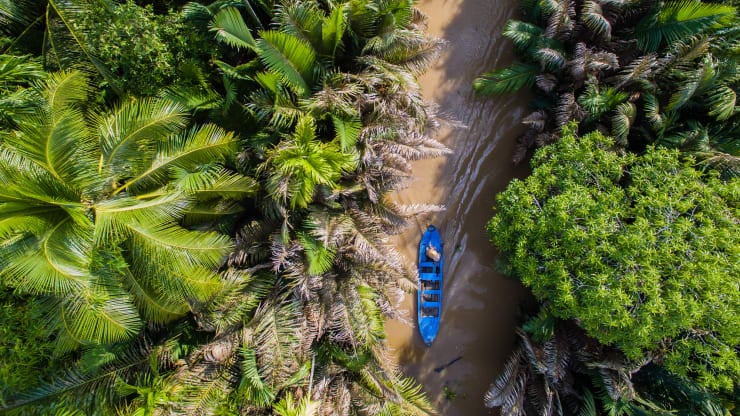
1.7. The Mekong River is a treacherous waterway
Is the Mekong River dangerous? Despite the numerous benefits it brings, the Mekong River can bring about drawbacks. There are rapids and waterfalls in the upper regions, making it incredibly difficult to navigate. The season-by-season variations are also very extreme.
Between July and October, 75% of the river’s water flows through, leading to heavy floods. Sometimes, the flows can reverse upstream, causing flood pulses that devastate communities living along the riverbanks. In addition, the Mekong is prone to sedimentation, which affects navigation and can lead to the formation of sandbars and shifting channels that increase the risk of accidents and collisions.
>>> Read more: Mekong Delta weather: Things you need to know to plan a perfect trip
2. What is the Mekong River famous for?
- Natural beauty: The Mekong is surrounded by stunning landscapes, from mountains to jungles. Unwinding in its unspoiled beauty is an experience like no other. There are also plenty of opportunities for taking captivating photos.
- Local life: The Mekong is the lifeline for many communities. So, it is always deeply connected to the people. Floating markets, villages, and fisheries are fantastic aspects to glimpse into the daily life of those along the river.
- Water sports: Thanks to its rapids and waterfalls, the Mekong is also ideal for adrenaline-pumping water sports. From rafting to kayaking, there is no shortage of exhilarating activities for thrill-seekers.
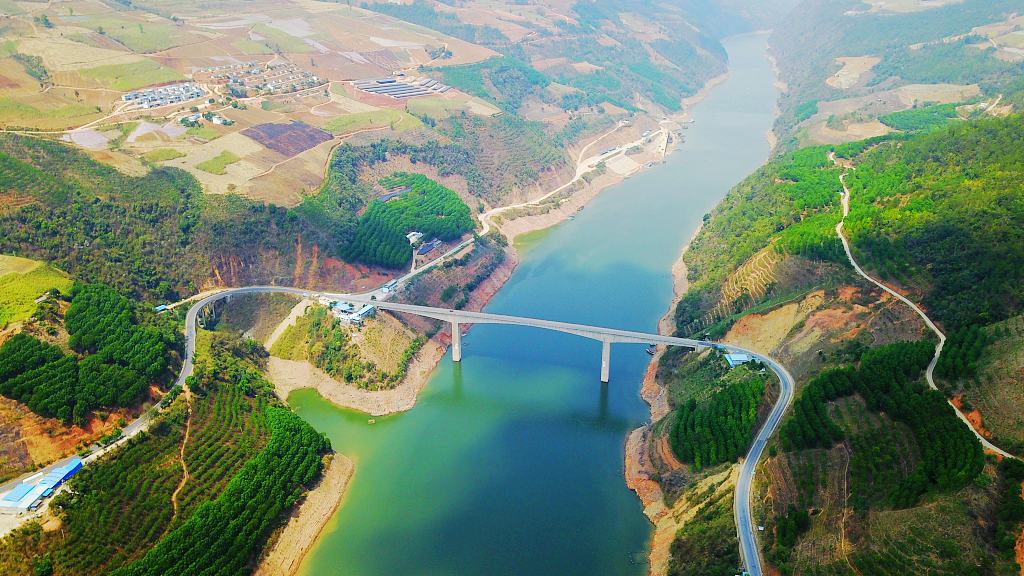
3. Must-have experiences on a Mekong River adventure
3.1. Take a scenic Mekong River cruise
Embarking on a river cruise is one of the best ways to take in all that the Mekong has to offer. The best time for Mekong River cruises is between November and January, as the weather is pleasant. You can choose from many different routes. A popular one is from Phnom Penh to Ho Chi Minh City, passing Chau Doc, Can Tho, Vinh Long, and My Tho. With a river cruise, you will be able to explore multiple destinations along the Mekong without having to constantly pack and unpack. There are opportunities to witness breathtaking scenery and observe local life up close, leaving you with unforgettable memories.
3.2. Paddle a kayak or raft
Paddling along the Mekong is another great way to experience everything that the river has to offer. As you glide along, you will be able to connect with nature, interact with locals, and explore hidden gems. You might also come across landmarks, like temples, to learn even more about the Mekong’s culture. Compared to taking a cruise, you will be able to enjoy the river at your own pace. Stop whenever and wherever you want for a one-of-a-kind experience.
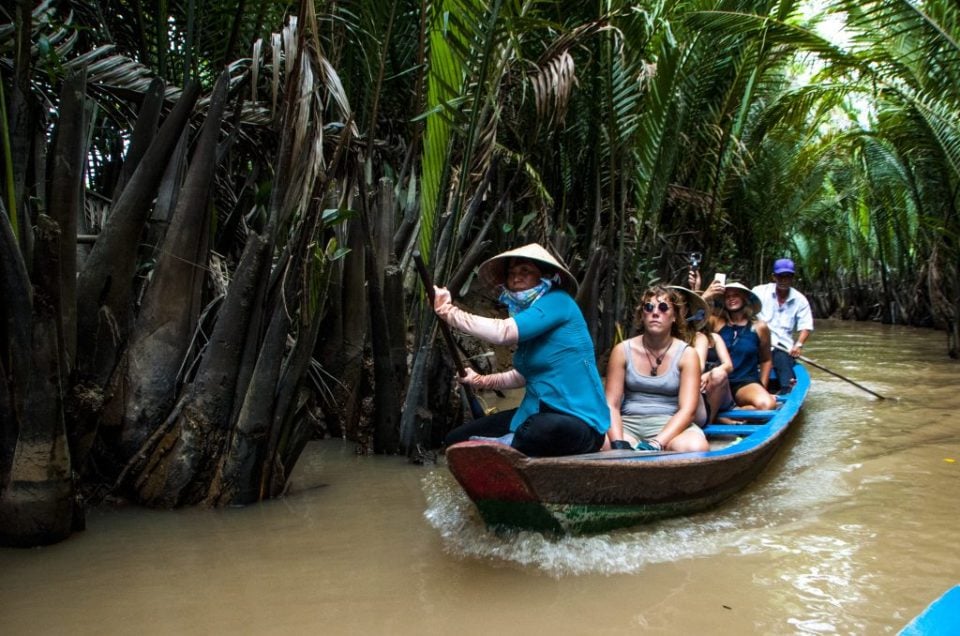
3.3. Visit Mekong River floating markets
Visiting floating markets is an experience that is nothing short of extraordinary. You can visit Cai Rang Floating Market or Cai Be Floating Market, bargaining for fresh produce and trying out delicious delicacies. These vibrant floating markets offer a unique glimpse into the country's rich cultural heritage and bustling trade scene. As you navigate the markets, you will encounter an indelible symphony of colors, sounds, and aromas.
3.4. Learn about local cultures
- Observe fishermen: Watching the locals fishing is a great way to learn about the region’s culture. You can see how they apply traditional fishing methods and gauge the Mekong’s significance to the people.
- Visit temples: Temples along the Mekong hold cultural and religious significance. Exploring these can offer you a glimpse into the spiritual practices and art forms that are important to the local communities.
- Talk to farmers: Striking up conversations with the farmers at paddies can give you a deeper understanding of their connection to the land and the challenges they face. As with watching the fishermen, you can get an idea of the river’s importance to the people.
These activities will allow you to immerse yourself in the local way of life and give you a more holistic appreciation of the Mekong River, culture-wise.
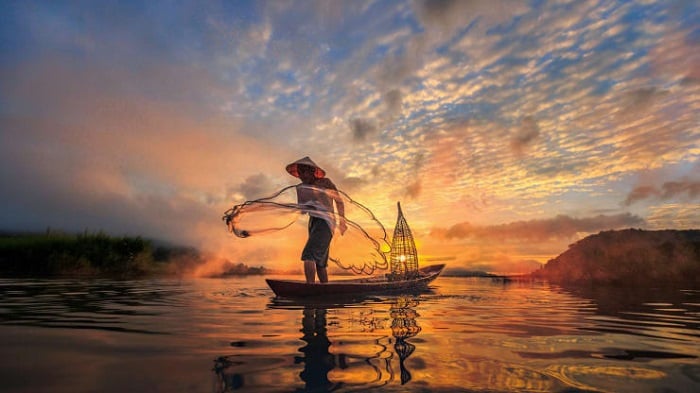
4. Best places to visit in the Mekong River Delta in Vietnam
4.1. Can Tho
Can Tho is popular for its bustling floating markets, where locals trade goods directly from their boats. You can take tours to explore the markets, witness the lively trading scene, engage with the locals to learn about their daily routines, and sample delicacies on the spot. It is an authentic Mekong River experience that you will not get anywhere else.
To delve deeper into the charm of Can Tho, you can rent a bike to ride around and take in the peaceful and picturesque surroundings. Don't forget to stop by Can Tho Bridge, where you can catch the sunrise or sunset for a magical experience.
4.2. Tra Vinh
Tra Vinh is another destination worth visiting in Vietnam's Mekong Delta region. It is well known for its Khmer population. Here, you can visit Khmer pagodas to learn about the Khmer community's religious practices. You can also immerse yourself in serenity and enjoy a special connection with nature.
You should also explore Tra Vinh's delectable Khmer cuisine. The local dishes harmoniously blend flavors influenced by Vietnamese and Cambodian culinary traditions. A dish that you should try is "Num Banh Chok", a type of rice noodle soup topped with fresh herbs.
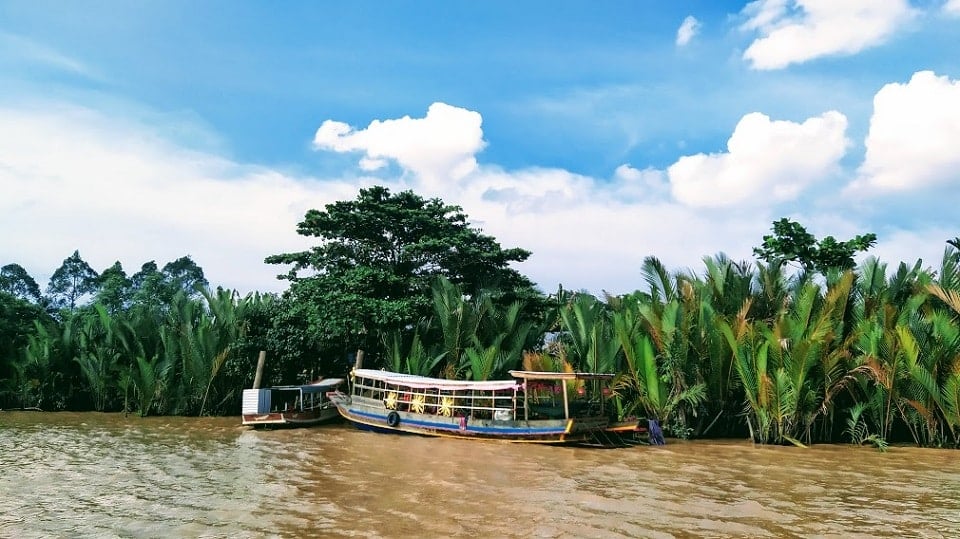
>>> Read more: Mekong Delta map: A detailed roadmap to exploration for wanderers
4.3. Ben Tre
In Ben Tre, the lush landscapes and tranquil waterways create a peaceful atmosphere that takes you away from the hustle and bustle of city life. To fully embrace it, you should go on a boat tour. The sight of swaying palm trees and coconut trees will leave you in awe.
One of the highlights of visiting Ben Tre is the opportunity to immerse yourself in the local way of life. You can visit family-owned workshops, where skilled artisans demonstrate the art of making coconut candy.
Another fascinating aspect of Ben Tre is its thriving fruit orchards, where you can step into a world bursting with tropical fruits like mangoes, dragon fruits, and pomelos. Ben Tre is an ideal place to slow down, connect with nature, and engage with culture.
4.4. An Giang
For an authentic and immersive experience, An Giang is an ideal destination along the Mekong River. It is best to come here between March and May, as the weather during this time is quite pleasant. A must-visit spot in An Giang is Sam Mountain, where the view at the top is particularly enchanting during sunrise or sunset.
From Sam Mountain, you can visit nearby temples that are deeply revered by both locals and visitors. These sacred sites are gateways into Vietnam’s rich spiritual heritage. They are also great places for quiet contemplation and reflection.

4.5. Kien Giang
Kien Giang is famous for its stunning island landscapes, with Phu Quoc being the most popular. On Phu Quoc Island, you can relax on pristine beaches and visit attractions like Phu Quoc National Park. Exploring the night market in Duong Dong Town is also a must-do activity, where you can enjoy local delicacies, shop for souvenirs, and engage with others.
But there is more to Kien Giang than Phu Quoc. Another notable destination that you should not miss out on is Hon Tre, an island renowned for crystal-clear waters and colorful coral reefs. Here, you can try many thrilling water activities, from jet skiing to banana boating.
After exploring Vietnam’s rural charm along the Mekong River, you can visit Hanoi, Ho Chi Minh City, and Nha Trang for a taste of the country’s vibrant urban life. Hoi An and Ha Long are also great places to visit to immerse yourself in a fascinating blend of ancient traditions and modern developments.
At these destinations, Vinpearl’s hotels and resorts offer luxurious accommodations and world-class amenities for a blend of comfort and convenience. There are also the entertainment complexes of VinWonders, where you can create many cherished memories with your loved ones.

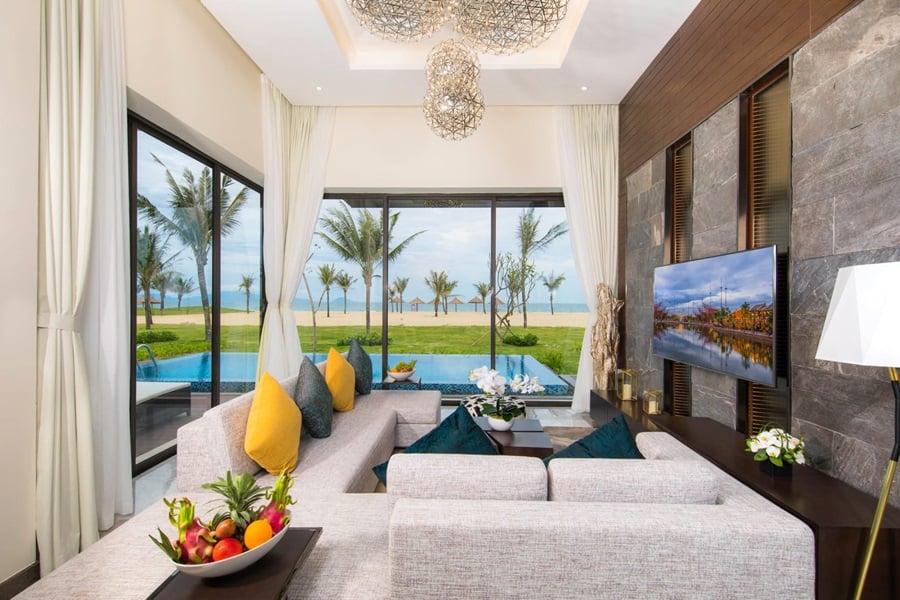
>>> Book rooms in Vinpearl Phu Quoc, Vinpearl Nha Trang, Vinpearl Resort & Golf Nam Hoi An, Vinpearl Resort & Spa Ha Long to enjoy great hospitality!
The Mekong River is among the best places to explore on earth, where you can immerse yourself in nature and culture. Take a cruise or paddle a kayak to go sightseeing and interact with locals at floating villages, markets, and fisheries. The Mekong River will allow you to experience firsthand the seamless connection between nature and people.


